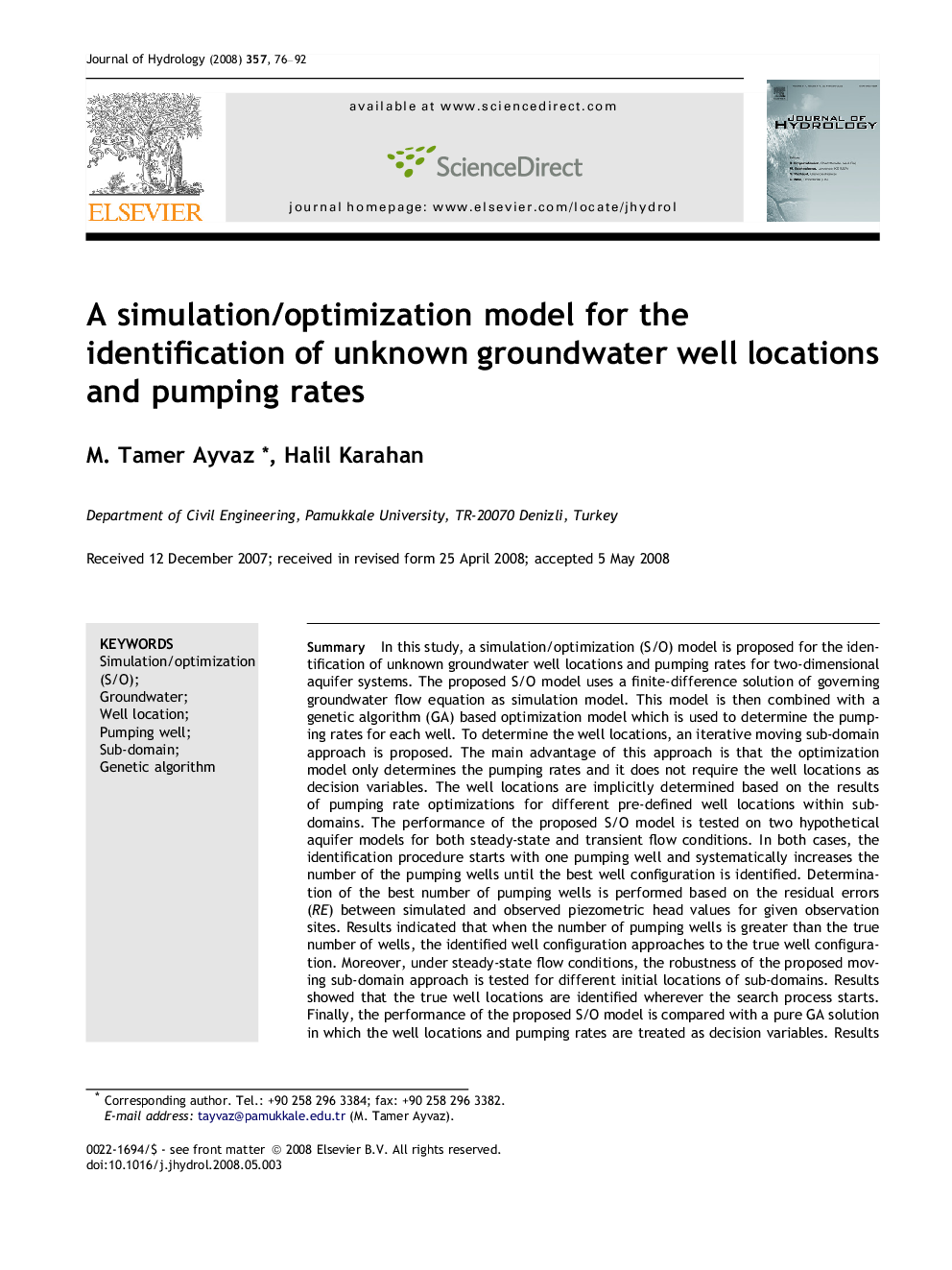| Article ID | Journal | Published Year | Pages | File Type |
|---|---|---|---|---|
| 4579361 | Journal of Hydrology | 2008 | 17 Pages |
SummaryIn this study, a simulation/optimization (S/O) model is proposed for the identification of unknown groundwater well locations and pumping rates for two-dimensional aquifer systems. The proposed S/O model uses a finite-difference solution of governing groundwater flow equation as simulation model. This model is then combined with a genetic algorithm (GA) based optimization model which is used to determine the pumping rates for each well. To determine the well locations, an iterative moving sub-domain approach is proposed. The main advantage of this approach is that the optimization model only determines the pumping rates and it does not require the well locations as decision variables. The well locations are implicitly determined based on the results of pumping rate optimizations for different pre-defined well locations within sub-domains. The performance of the proposed S/O model is tested on two hypothetical aquifer models for both steady-state and transient flow conditions. In both cases, the identification procedure starts with one pumping well and systematically increases the number of the pumping wells until the best well configuration is identified. Determination of the best number of pumping wells is performed based on the residual errors (RE) between simulated and observed piezometric head values for given observation sites. Results indicated that when the number of pumping wells is greater than the true number of wells, the identified well configuration approaches to the true well configuration. Moreover, under steady-state flow conditions, the robustness of the proposed moving sub-domain approach is tested for different initial locations of sub-domains. Results showed that the true well locations are identified wherever the search process starts. Finally, the performance of the proposed S/O model is compared with a pure GA solution in which the well locations and pumping rates are treated as decision variables. Results indicate that the proposed S/O model finds smaller RE than the pure GA solution by performing 14% less simulations.
